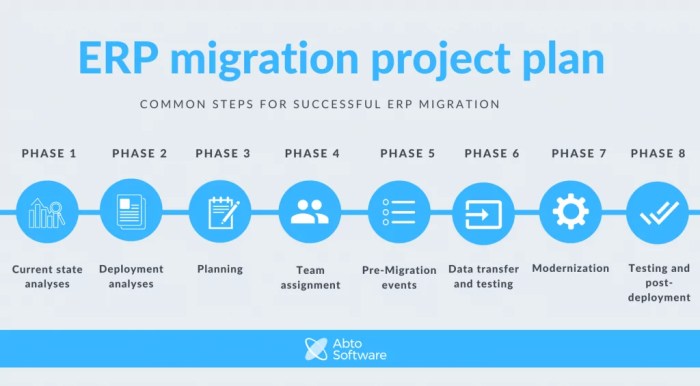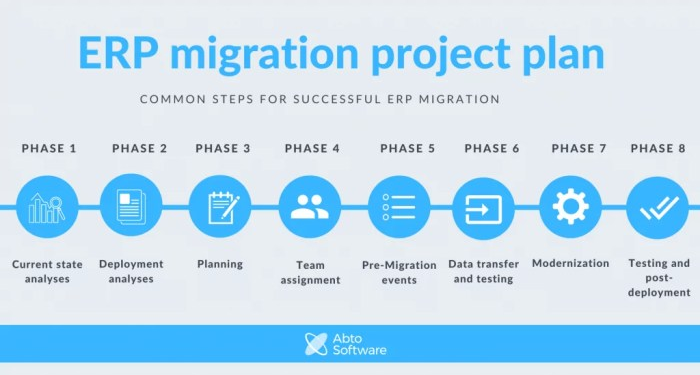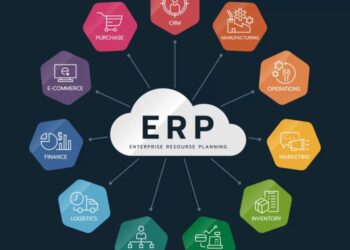Embarking on the journey of ERP migration opens doors to improved efficiency and streamlined processes within organizations. As companies strive to stay competitive in today's dynamic business landscape, the need to transition to new ERP systems becomes increasingly crucial. In this guide, we will delve into the intricacies of ERP migration, exploring the steps involved, key considerations, and the potential benefits awaiting organizations at the end of this transformative process.
Overview of ERP Migration

ERP migration refers to the process of moving from one Enterprise Resource Planning (ERP) system to another. This involves transferring data, processes, and workflows from the old system to the new one.
Commonly Migrated ERP Systems
- SAP
- Oracle E-Business Suite
- Microsoft Dynamics
Reasons for ERP Migrations
- Outdated technology: Companies may migrate to take advantage of newer features and functionalities offered by the latest ERP systems.
- Cost savings: Upgrading to a more efficient ERP system can lead to reduced operational costs and increased productivity.
- Compliance requirements: Companies may need to migrate to ensure compliance with changing regulations and standards.
Benefits of ERP Migration
- Improved efficiency: New ERP systems often streamline processes and workflows, leading to increased efficiency within the organization.
- Enhanced reporting and analytics: Modern ERP systems provide better reporting capabilities, allowing for data-driven decision-making.
- Scalability: Upgrading to a more robust ERP system can support the company's growth and scalability needs.
Planning for ERP Migration
Planning for an ERP migration is a critical phase that requires careful consideration and thorough preparation. The success of the migration project largely depends on how well the planning is executed.
Steps Involved in Planning for an ERP Migration
- Conduct a comprehensive analysis of current systems and processes to identify areas that need improvement.
- Define clear objectives and goals for the migration project to ensure alignment with the overall business strategy.
- Develop a detailed migration plan outlining tasks, timelines, and responsibilities for each phase of the project.
- Allocate resources and budget effectively to support the migration process.
- Create a communication plan to keep stakeholders informed and engaged throughout the migration.
Key Stakeholders Involved in the Planning Process
- Executive Leadership: Provide strategic direction and support for the migration project.
- IT Department: Responsible for technical aspects of the migration and ensuring system compatibility.
- End Users: Input from end users is essential to understand their requirements and ensure a smooth transition.
- External Consultants: May be required for specialized expertise and guidance during the planning phase.
Setting Realistic Goals and Timelines for ERP Migration Projects
Setting realistic goals and timelines is crucial to the success of an ERP migration project. It involves:
"Defining specific, measurable, achievable, relevant, and time-bound (SMART) objectives to guide the project."
Importance of Conducting a Thorough Assessment of Existing Systems
Before embarking on an ERP migration, it is essential to conduct a thorough assessment of existing systems to:
- Identify potential challenges and risks that may arise during the migration process.
- Evaluate the compatibility of current systems with the new ERP solution.
- Understand the impact of the migration on different departments and functionalities within the organization.
Choosing the Right ERP System for Migration
When it comes to selecting the right ERP system for migration, it is crucial to consider various factors to ensure a smooth transition and successful implementation. Compatibility and integration capabilities play a significant role in this process, as they determine how well the new ERP system will work with existing systems and processes.
Additionally, comparing different ERP systems available in the market can help in making an informed decision.
Comparison of ERP Systems
- One popular ERP system for migration is SAP S/4HANA, known for its advanced features and real-time analytics capabilities.
- Another option is Oracle ERP Cloud, which offers a wide range of applications and scalability for growing businesses.
- Microsoft Dynamics 365 is also a contender, providing seamless integration with Microsoft products and services.
Factors to Consider
- Scalability: Ensure the ERP system can grow with your business and accommodate future needs.
- User-Friendliness: Choose a system that is easy to use and can be adopted by employees across all departments.
- Cost: Evaluate the total cost of ownership, including implementation, training, and maintenance expenses.
Importance of Compatibility and Integration
Compatibility and integration capabilities are crucial for ensuring that the new ERP system can seamlessly communicate with existing software and databases, minimizing disruptions and data loss during migration.
Successful ERP System Migrations
- Company A successfully migrated to Oracle ERP Cloud, streamlining their operations and improving efficiency across departments.
- Company B upgraded to SAP S/4HANA, enabling real-time insights and data-driven decision-making.
Data Migration in ERP Projects
When it comes to ERP projects, data migration is a critical phase that can pose various challenges if not handled properly. Ensuring data integrity, security, and mapping from legacy systems to the new ERP system are key aspects that need careful consideration.
Challenges Associated with Data Migration
- Complexity of data: The volume and complexity of data in ERP systems can make migration a daunting task.
- Data quality issues: Inaccurate or incomplete data can lead to errors and inefficiencies in the new system.
- Data mapping: Matching data fields from legacy systems to the new ERP system requires meticulous planning and execution.
Best Practices for Ensuring Data Integrity and Security
- Perform data cleansing: Ensure data is accurate, complete, and consistent before migration.
- Implement data encryption: Protect sensitive data during migration to prevent security breaches.
- Conduct thorough testing: Test data migration processes to identify and resolve any issues before going live.
Strategies for Mapping Data from Legacy Systems to the New ERP System
- Document data mapping: Create a detailed mapping document to track the relationships between data fields in the old and new systems.
- Use automated tools: Utilize data migration tools to streamline the mapping process and reduce manual errors.
- Involve stakeholders: Collaborate with end-users to validate data mapping and ensure it meets their requirements.
Common Pitfalls to Avoid When Migrating Data in ERP Projects
- Underestimating data complexity: Failure to accurately assess the complexity of data can lead to delays and errors.
- Ignoring data validation: Skipping data validation processes can result in data discrepancies and integrity issues.
- Lack of proper training: Inadequate training on the new system can hinder data migration and overall project success.
Summary
In conclusion, ERP migration is not just a technical upgrade but a strategic move that can elevate an organization's operational capabilities and pave the way for future growth. By carefully planning, selecting the right ERP system, and handling data migration with precision, companies can position themselves for success in the digital era.
Quick FAQs
What are the common challenges faced during ERP migration projects?
Common challenges include system downtime, data security risks, and user resistance to change. Mitigating these challenges requires meticulous planning and effective communication throughout the process.
How long does an ERP migration typically take?
The duration of an ERP migration project varies depending on the size of the organization, complexity of systems, and extent of data migration required. On average, it can take anywhere from several months to a year to complete the migration process.
What are the key benefits of ERP migration for organizations?
ERP migration can lead to improved operational efficiency, enhanced data visibility, better decision-making capabilities, and increased scalability for future growth. It also allows organizations to stay competitive by leveraging the latest technological advancements in ERP systems.








![Best Construction ERP Software [2024 Edition]](https://health.bandungnews.id/wp-content/uploads/2025/10/Top-10-Best-Construction-ERP-Software-to-Use-in-2024-1-120x86.jpg)



